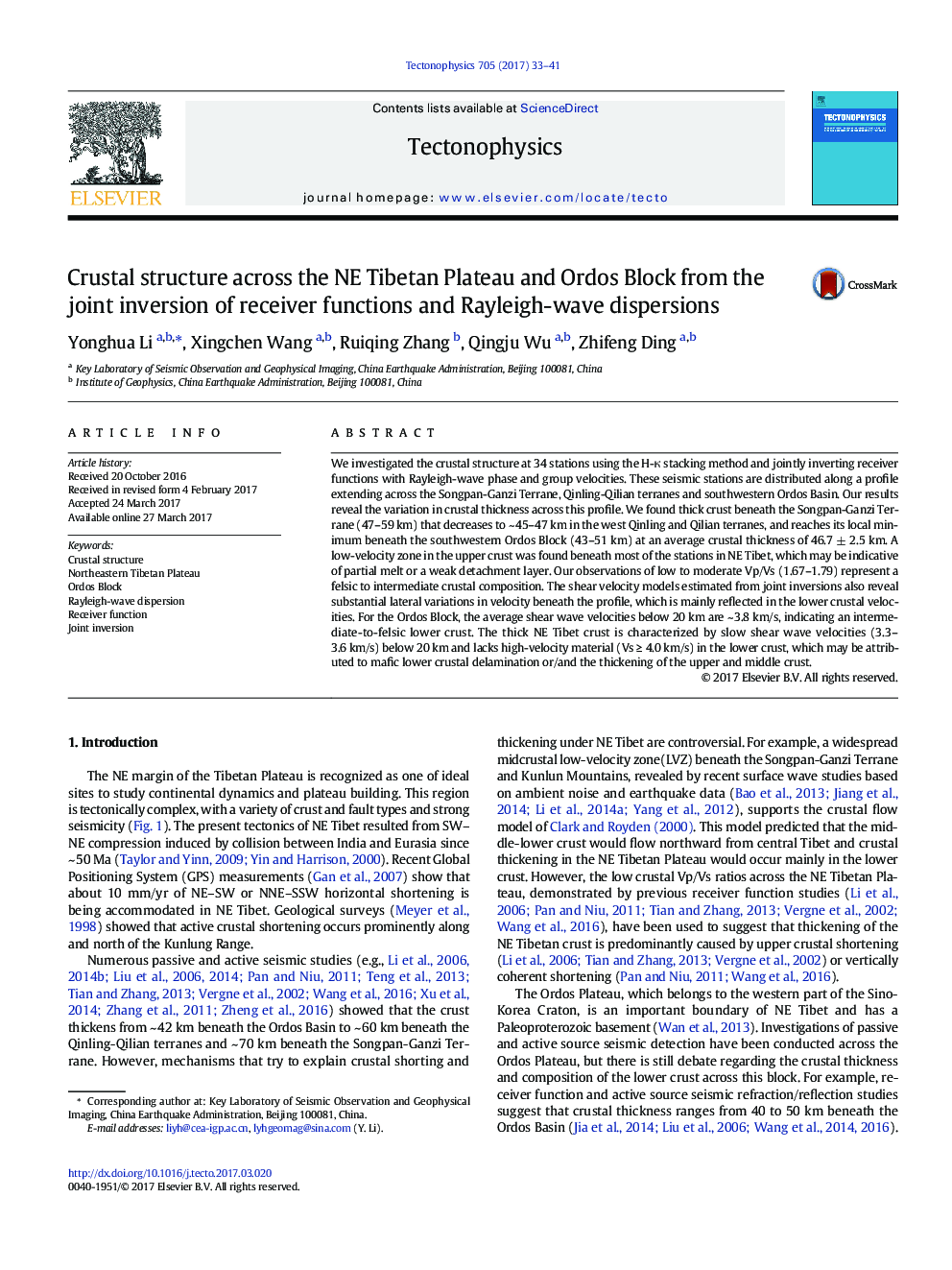| Article ID | Journal | Published Year | Pages | File Type |
|---|---|---|---|---|
| 5781626 | Tectonophysics | 2017 | 9 Pages |
Abstract
We investigated the crustal structure at 34 stations using the H-κ stacking method and jointly inverting receiver functions with Rayleigh-wave phase and group velocities. These seismic stations are distributed along a profile extending across the Songpan-Ganzi Terrane, Qinling-Qilian terranes and southwestern Ordos Basin. Our results reveal the variation in crustal thickness across this profile. We found thick crust beneath the Songpan-Ganzi Terrane (47-59 km) that decreases to ~ 45-47 km in the west Qinling and Qilian terranes, and reaches its local minimum beneath the southwestern Ordos Block (43-51 km) at an average crustal thickness of 46.7 ± 2.5 km. A low-velocity zone in the upper crust was found beneath most of the stations in NE Tibet, which may be indicative of partial melt or a weak detachment layer. Our observations of low to moderate Vp/Vs (1.67-1.79) represent a felsic to intermediate crustal composition. The shear velocity models estimated from joint inversions also reveal substantial lateral variations in velocity beneath the profile, which is mainly reflected in the lower crustal velocities. For the Ordos Block, the average shear wave velocities below 20 km are ~ 3.8 km/s, indicating an intermediate-to-felsic lower crust. The thick NE Tibet crust is characterized by slow shear wave velocities (3.3-3.6 km/s) below 20 km and lacks high-velocity material (Vs â¥Â 4.0 km/s) in the lower crust, which may be attributed to mafic lower crustal delamination or/and the thickening of the upper and middle crust.
Related Topics
Physical Sciences and Engineering
Earth and Planetary Sciences
Earth-Surface Processes
Authors
Yonghua Li, Xingchen Wang, Ruiqing Zhang, Qingju Wu, Zhifeng Ding,
